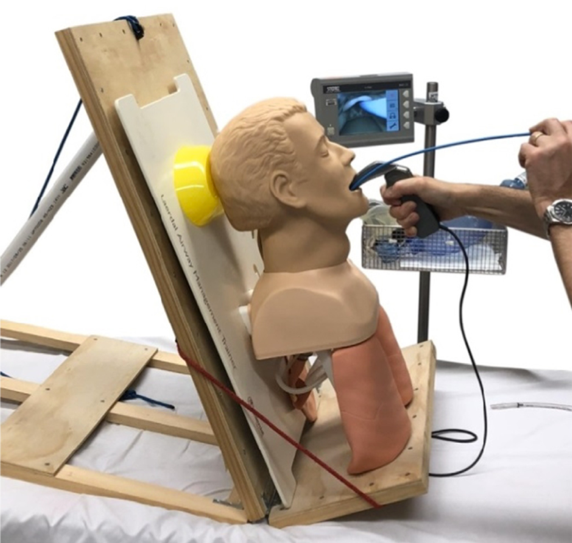פוסט זה זמין גם ב:
עברית
Written by Nickolas Srica
Spoon Feed
Upright face-to-face intubation had minimal difference in time to intubation or laryngeal views obtained when compared to supine intubation on cadavers, but there were some limitations with this study and further investigation into this technique and its application are needed.
Why does this matter?
Emergent endotracheal intubation in the ED most commonly occurs in a supine position. Prior studies have demonstrated some potential benefits to ramped or sitting positions including improved laryngeal views in obese populations, better tolerance to apnea in certain patients, and multiple possible prehospital benefits when supine intubation may not be feasible. Could the upright face-to-face intubation technique be an option for those instances where upright positioning is ideal for other reasons?
I mean seriously, what’s up with upright, right?
This was a comparison study performed in Australia in which a single senior emergency physician intubated 25 cadavers in both the supine and upright face-to-face positions in a random order using a bougie while recording using a C-MAC video laryngoscope. The primary outcome was time to intubation with the secondary outcome being the comparison of laryngeal views obtained using the percentage of glottic opening (POGO) score and the Cormack-Lehane (CL) grade. The recordings of each intubation attempt were reviewed by five emergency physicians who were blinded to the position of the cadaver, and descriptive statistics were then applied to compare the data.
The median time to intubation was 1 second longer for upright versus supine positioning, which was statistically significant (95%CI excluding outlier: 1.5 to 9.5), though the authors felt this was unlikely to have significant clinical implications. The median for the averaged CL grade was 0.2 higher in the upright group, but this was not statistically significant (95%CI excluding outlier: -0.4 to 0.2). Mean POGO score was 4.7% lower for the upright group (excluding one outlier), and again, this was not statistically significant (95%CI excluding outlier: -8.1 to 17.5).
Despite the minimal differences between intubation times and laryngeal views in this study, there were several limitations. The entirety of this study was performed by a single physician, which certainly decreases the generalizability of the results. I also think the upright face-to-face technique, for which the proceduralist utilizes the laryngoscope blade in the right hand while standing to the patient’s right side (see the below photo), is not a technique many of us have much experience with, so training would be needed prior to utilizing. Overall, there do seem to be patient populations and situations for which upright positioning may be optimal, but further investigation is needed to determine the applicability of this technique.

Source
Comparison of supine and upright face-to-face cadaver intubation. Am J Emerg Med. 2022 Jun;56:87-91. doi: 10.1016/j.ajem.2022.03.029. Epub 2022 Mar 18.





